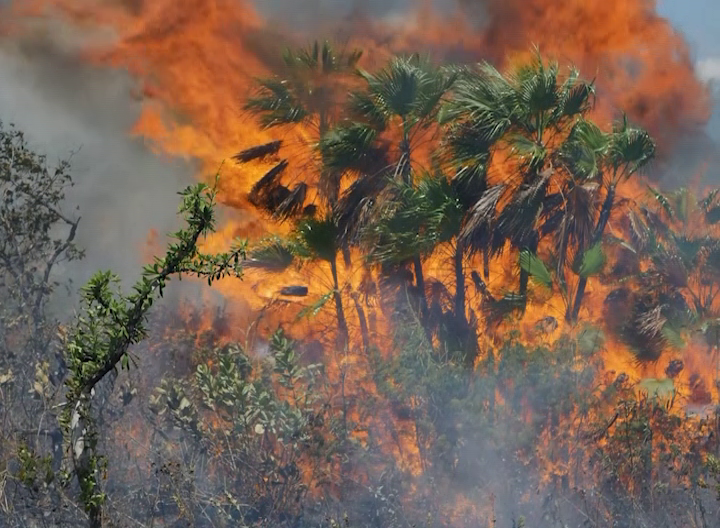Across the region, people have been suffering from the effects of a severe heatwave. The extreme weather conditions have led to exhaustion and dehydration, as well losses in agriculture, as brush fires are made worse by the rising temperatures. Also forced to cope with these conditions are the thousands of animals that occupy the affected areas. In recent weeks, Mexico’s southeastern tropical forest has observed the sudden deaths of monkeys, parrots and toucans as they succumb to the soaring temperatures. As Belize has also been experiencing record high weather conditions the question of how the extreme heat has been affecting our native species is being raised. Here’s News Five’s Britney Gordon with those answers.
Britney Gordon, Reporting
Across the region, birds and monkeys are dying at an alarming rate. Every year, as temperatures rise, wildlife conservationists have worked to combat the effects on animals. However, as this year continues to see severe weather conditions, they have had to double their efforts. Jamal Andrewin-Bohn, Conservation Program Manager at the Belize Zoo, gave us some insight into the issue.
On the phone: Jamal Andrewin-Bohn, Conservation Program Manager, Belize Zoo
“Typically we, obviously we’ve been in a position where we’ve had to respond to animals in distress for a variety of environmental, risks of disaster and heat and fire are among those. So yes, we do get reports of animals seeming to be disoriented dehydrated, exhausted from exposed, prolonged exposure to heat and also lack of access to water simply because the natural ponds and creeks that they would typically access do eventually dry up in the winter. in the peak of the dry season and so they have to move further afield looking for water looking for food sources and of course this itself is a pressure on the animals but then it also puts them at a higher chance of encountering humans and coming into conflict with human.”
Nikki Buxton, Executive, Belize Bird Rescue
“I think they’re probably all struggling, but the beauty of birds is that they can fly and they can get away from these situations, which definitely gives them an edge over every other species that’s not flighted. And the migrants are struggling. I think they’re totally confused as to when they should migrate. And what they’re migrating into and what they travel through at that time as well. And it’s not, you know, we’re talking about fires, but it’s not just that there’s extreme weather all year round, and they encounter a lot of that during the migration patterns. But the birds that make Belize their home and the ones that rely on certain environments and have niche environments, they’re the ones that are going to suffer the most.”
“So this is not new. This is over several decades where we’ve been advocating for a more mindful application of fire and utilization of resources. And so what we have done the zoo as an entity with its partners, and that’s one of the biggest. Efforts we’ve taken on to address this is we have for the last We have been part of a working group that specifically deals with fire management issues in central Belize. And it is a coalition of not just non-governmental entities, but with input and support from the Belize Forest Department. But most importantly, from communities within our area, communities that are in fire prone areas like the savannah, that have to deal with wildfires threatening their homes, their properties, their livelihoods, their health and wellbeing until it’s a collective effort to reduce the impact of fires.”
He explained that the zoo has taken additional measures to ensure that the animals survive the heatwave, such as the addition of a new pond and trucking in over two thousand gallons of water daily. Buxton said that we should try to assist the animals in any way possible.
“I think we’ve got to think of the birds and the animals in the same way as we think of other selves. We know that that heat drives thirst. The moisture that we have in our bodies evaporates so much faster. So it would be really nice if people could think about other species on this planet and maybe provide a water source for them. We’ve got some really amazing families that are putting out drinking bottles that they’ve created from old plastic bottles, which is absolutely fantastic and also think about the domestic animals that we have. It’s not enough now just to tie a dog with a little bottle of water in this, in this temperature, we need to make sure that they have a lot like a bucket full. So I think we’ve got to be more thoughtful”
Britney Gordon for News Five.
